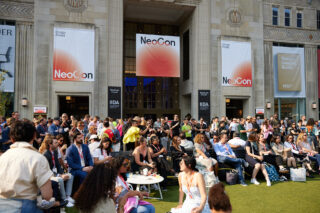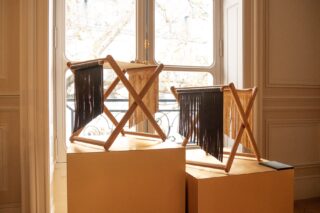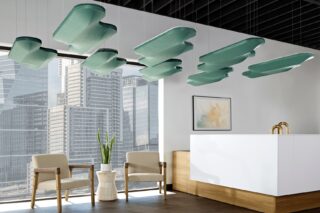Modern Japanese design companies are revitalizing traditional Japanese crafts, such as Kabazaiku, lacquerware, and leatherworking.
Japanese design companies are redefining craftsmanship by merging traditional techniques with modern innovations. Momentum Factory Orii in Toyama Prefecture leads with its distinctive copper and brass tiles, colored using the traditional Takaoka-Douki technique, bringing unique aesthetics to spaces like hotels and museums. In Kyoto, Makino Urushi Design revitalizes urushi lacquer under fourth-generation artisan Kohta Makino, blending ancient methods with contemporary design, showcased in high-end furniture and art pieces at events like Maison&Objet Paris.
In Akita, Tomioka Shoten breathes new life into Kabazaiku by integrating cherry bark artistry into modern products through collaborations with designers like Mauricio Clavero Kozlowski, promoting sustainable practices and cultural heritage. Nagano’s Sansui crafts pieces from ancient trees, transforming historically significant wood into new designs and earning accolades like the GOOD DESIGN Award. Meanwhile, the Kobe Leather Cooperative in Hyogo Prefecture innovates with shape memory leather and the KEIOKU ORIGAMI series, establishing a new Kobe leather brand that blends traditional aesthetics with modern functionality. These companies exemplify the evolution of Japanese craftsmanship, creating exceptional and unique products by merging age-old techniques with contemporary design.
Shaping Space with Copper: The Unique Tiles of Momentum Factory Orii
Momentum Factory Orii, based in Takaoka, Toyama Prefecture, offers an innovative approach to interior design with its distinctive copper and brass tiles. These tiles, suitable for a variety of settings such as shops, hotels, restaurants, train stations, and museums, bring a unique aesthetic to entire walls. The application involves attaching the tiles with an adhesive compatible with both the metal and wall material, ensuring a seamless and durable installation. The tiles are not just functional; they are a testament to the craftsmanship and imagination of Orii’s artisans, who use traditional Takaoka-Douki copper coloring techniques to create a rich array of colors and patterns that appear almost magical.
In addition to tiles, Orii produces the “copper scape” art panel, which showcases the traditional copper coloring technique, and collaborates with Hajime Yoshida Architecture for the “embrace” lighting design. These products highlight the workshop’s ability to infuse traditional methods with modern aesthetics. The coloring process involves unique methods such as boiling metal in a mixture of copper sulfate and copper carbonate to achieve the “Ni-Iro” color, and the “Nuka-yaki” technique, which uses a burner to bake a bran miso-coated copper base, creating intricate patterns. This dedication to traditional yet innovative techniques allows Orii to transform ordinary spaces into extraordinary experiences, merging centuries-old craftsmanship with contemporary design.

Blending Tradition with Modern Design at Makino Urushi Design
Makino Urushi Design, a new brand launched in 2021 by the historic Makino Urushi Kougei Co., Ltd. of Kyoto, seamlessly blends traditional Japanese lacquer techniques with modern design. With roots dating back to 1928, the company has preserved the meticulous craftsmanship and cultural heritage of urushi lacquer, participating in notable projects like the restoration of Kinkaku-ji temple. The brand, under the leadership of the fourth-generation artisan Kohta Makino, aims to rejuvenate lacquerware through collaborations with diverse designers, creating innovative pieces for contemporary settings. Showcased at Maison&Objet Paris in 2024, their projects include furniture and art objects that highlight the unique textures and finishes of urushi, exemplifying the harmonious integration of tradition and modernity in their designs.
READ our article on Makino Urushi Design here.



Tomioka Shoten: Revitalizing Kabazaiku Through Modern Design Collaborations
Tomioka Shoten, based in Daisen City, Akita, is revitalizing Kabazaiku, a traditional handicraft of Kakunodate in Akita Prefecture, by collaborating with renowned designers like Mauricio Clavero Kozlowski to integrate it into contemporary designs. Kabazaiku, using the bark of wild cherry trees, originated in the late 18th century and evolved into a significant craft during the Meiji period, celebrated for its unique aesthetic and cultural value. Tomioka Shoten’s commitment to spreading the value of Kabazaiku internationally is evident in their sustainable practices, sourcing cherry bark from forests undergoing renewal work, thereby supporting environmental conservation and local industries. Their collaborations result in innovative products like door knobs and wall panels, blending traditional craftsmanship with modern aesthetics, showcased at prestigious events such as Maison&Objet Paris, preserving the art’s heritage while embracing contemporary design.


Sansui: Crafting Timeless Stories from Ancient Trees

Sansui, a brand rooted in the craftsmanship of Nagano, Japan, tells the story of ancient trees, known as “KOBOKU,” harvested from the rich forests of Japan and imbued with the layers of time. These trees, once part of traditional residences and marked by mortise and tenon holes, blackened surfaces from hearth smoke, and hatchet patterns, are carefully crafted into unique products that capture the essence of Japanese history and lifestyle. Sansuisya, founded in 1930, specializes in the dismantling, relocation, and restoration of traditional residences, utilizing ancient wood to construct new spaces that honor the past while embracing the future. With over 5,000 ancient trees in storage, each piece is meticulously dismantled and repurposed, carrying the desires of past generations into the present and future. In recognition of their efforts to preserve Japanese architectural techniques and culture, Sansui received the GOOD DESIGN Award in 2020. Their product range includes benches, sculptures, and more, each bearing the timeless beauty and narrative of Japanese craftsmanship.
Unfolding Elegance: The Versatility of Kobe Leather
The Kobe Leather Cooperative, established in 2019 in Chuo Ward, Kobe City, Hyogo Prefecture, Japan, is dedicated to enhancing the local economy through the innovative use of Kobe’s leather resources. By focusing on leather development, creating sample products, and conducting extensive PR, the cooperative aims to elevate the value of local leather goods and establish a distinct Kobe leather brand. Kobe Leather stands out with its shape memory and textured surfaces, offering unique possibilities and an industrial aesthetic. Their products include versatile holders that mold to preferred shapes for items like pens and glasses, functional shelves with storage bags, stylish trays for accessories, and the KEIOKU ORIGAMI series, which features shape memory leather that can be folded like origami.

Additionally, their night tables, designed with grooved patterns to complement “Kobe Furniture,” provide a blend of traditional aesthetics and modern functionality, making Kobe Leather a symbol of innovation rooted in local tradition.










